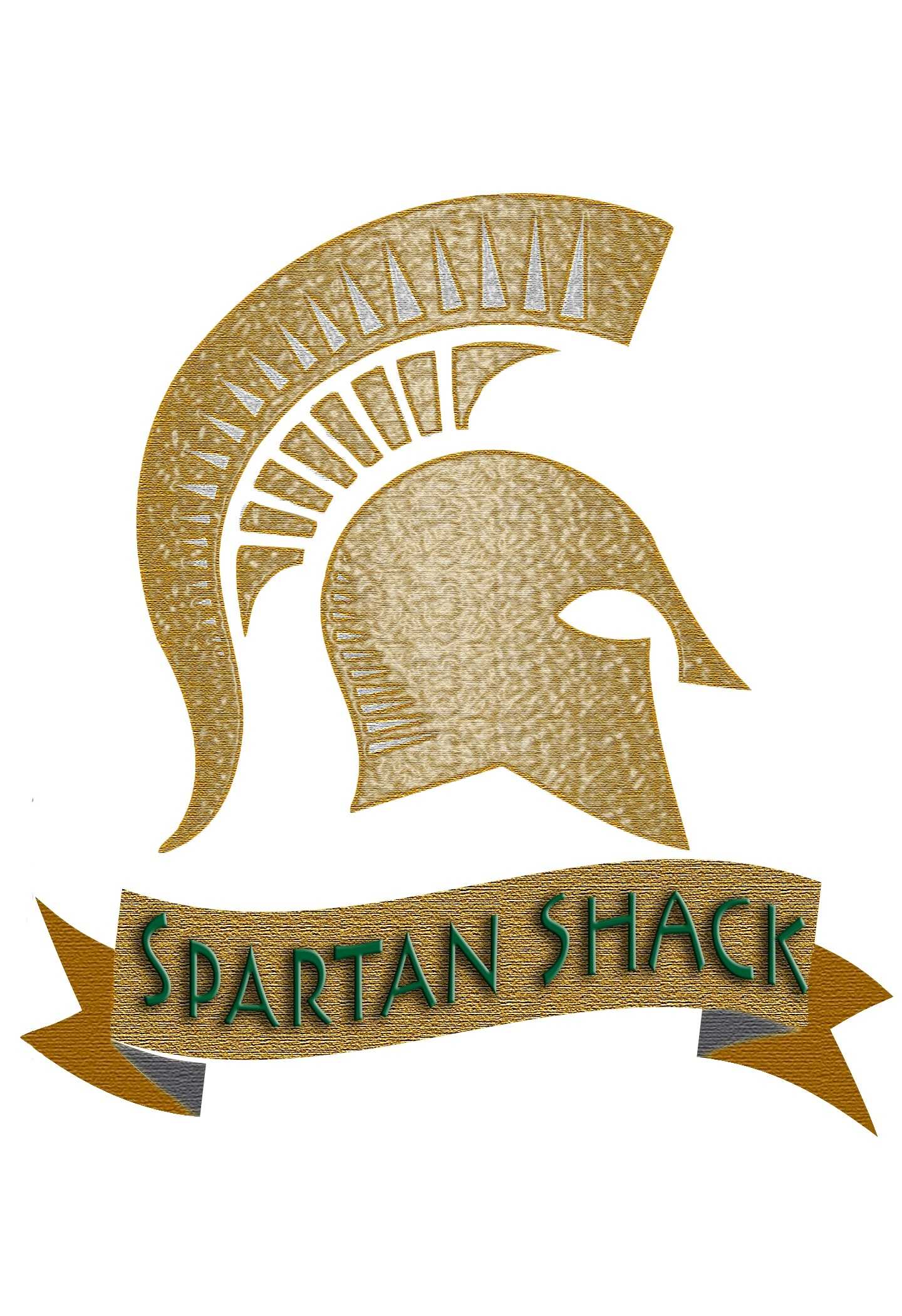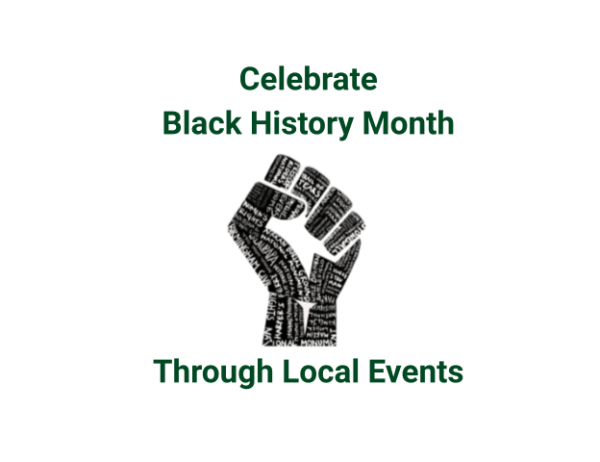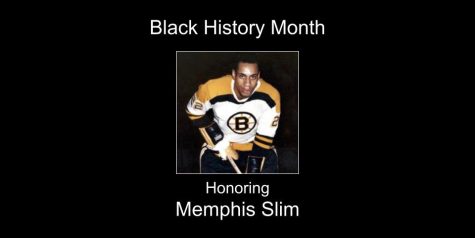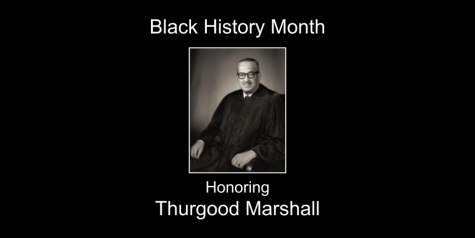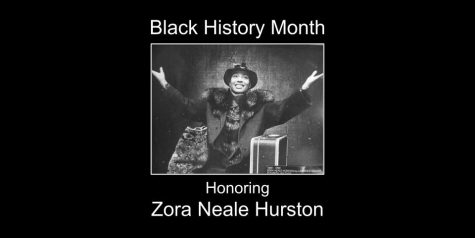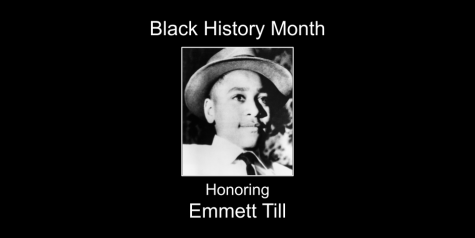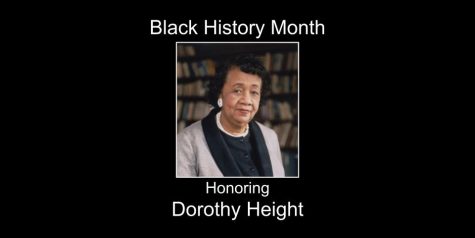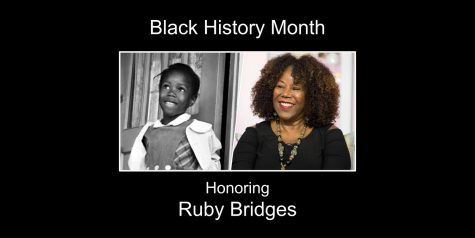The Absolute State Of Black WW1 Veterans, Especially for a Certain Group
March 3, 2023
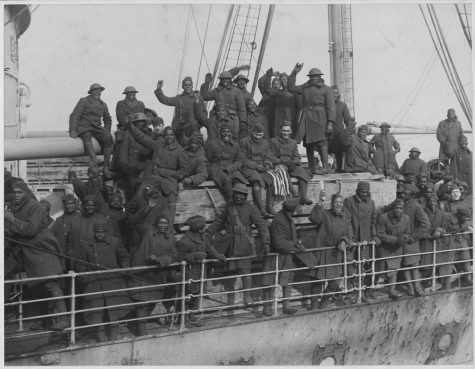
Debatably the bravest U.S. unit in WWI, the all-black 369th Infantry Regiment spent more time under combat than any other WWI American unit. It is because of their superb performance near the borders of France and Germany that they were awarded the Croix de Guerre by the French, a medal given as the “highest reward for bravery” at the time (Bay). Undoubtedly, this would be noticed by their homeland; unfortunately, no one was given a single medal from America at the time. However, a century later, we have the ability to appreciate what they have done for our country and the world.
According to Michael Bay, an editor for Britannica, the regiment was formerly known as “New York’s (Colored) 15th Infantry Regiment” (Bay). Most of the men were from New York City’s Harlem neighborhood. At first, the government was reluctant to create a black National Guard Unit as a result of white politicians preventing such efforts from taking place, but laws allowing for the creation of the unit would be passed by the state legislature and signed by New York’s Governor William Sulzer down the line. The 15th New York ”existed in name only” until they received a new commanding officer named William Hayward (Bay).
After the United States declared war on Germany in April 1917, the 15th New York, as they had come to be named, found a purpose unknown to anyone. As explained by Bay, they would be transported to different camps in the U.S. for training. Throughout the country, American training camps segregated the blacks and whites for the officer pathway. This presumably would decrease the chance of conflicts and distractions that would impede their life-saving training. This was not the case for the 15th New York. Members of the regiment reported receiving a relentless assault of discrimination from white soldiers (Bay). This pattern would continue after training, as many whites refused to work with black soldiers in the field. Training was a quick period of time for the unit before they were shipped off to France for the war; many wondered how the problems arising during that phase of preparation would play out when men faced real conflict.
Once across the Atlantic, the 15th New York worked on engineering projects, not in combat, which was common for most black units. Fortunately, that meant the soldiers of the 15th had time to promote jazz throughout the area. In fact, the story of how jazz came to Europe began back in America, during the unit’s training. Around the New York City area, a well-known jazz musician known as “Big Jim” had formed an organization called the Clef Club, whose purpose was to highlight and promote outstanding jazz musicians in the area. Some worked their way up to playing at Carnegie Hall, considered the pinnacle of success at the time. Leaders of the 15th New York recruited this famous musician, who became known as Lt. James “Big Jim” Reese Europe (Levine). As they made their way to France, when the 15th New York were unloading from their ship in France, Lt. Europe had the unit’s band play “a ragtime rendition of The Marseilles that thrilled and astonished the Frenchmen crowded on the docks. It’s said that their later performance in the French city of Nantes was the first jazz concert in Europe” (Levine). The rest, as they say, is history, because jazz music took off in France, growing into an extremely popular artform.
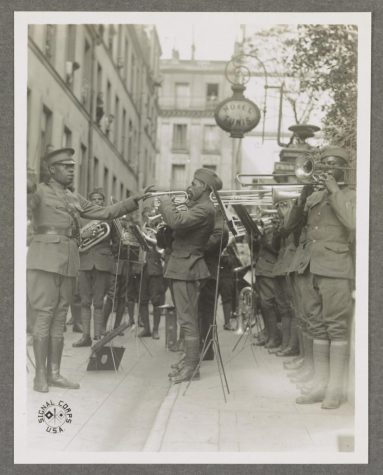
Still, the fighting of WWI raged on, and Officer Hayward recognized that his men would never get a chance to fight if nothing changed, so he used his influence to convince the higher ups to assign the 15th New York to fight in combat. In 1918, the unit was renamed the 369th Infantry Regiment and worked with the French Army to defend the Champagne area from the Germans. Pruitt reassures us that the French did not care that the soldiers were black (Pruitt). All the men suffered through the longest period of time in combat that any WWI US unit had ever experienced: 191 days. They performed so exceptionally that the German soldiers would nickname the 369th “Hellfighters” (Bay).
One exemplary Hellfighter was Henry Johnson, who fought ferociously when the Germans decided to invade. Stalling for time for reinforcements to arrive, he fought with everything that he had: grenades, his gun, and his knife. He was then awarded with the Croix de Guerre, in other words a medal of the highest honor for his valor in France. The continuation of this effort and energy throughout the entire unit earned them various degrees of the Croix de Guerre (Pruitt). After hitting the 191th day, the 369th were moved to the Rhine River area, near the rear. The fighters were exhausted from the intense fighting and waited to come home (Bay).
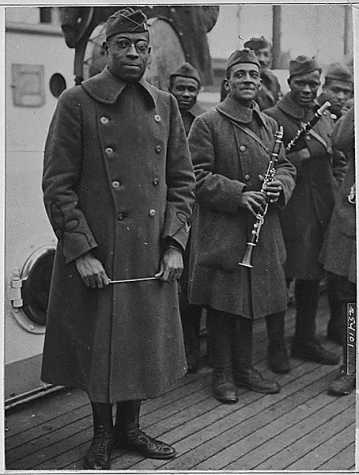
After a month near the Rhine, they finally had the opportunity to return home, where the injured and tired soldiers were finally able to rest. Beyond that, they were given a parade for their heroics. It was a wonder for them to be appreciated by their city and country; in fact, “U.S. President Theodore Roosevelt called Johnson one of the ‘five bravest Americans’ to serve in World War I” (Pruitt). It looked like they would go down in history as some of America’s best soldiers; however, this was only a short-term success that would fade away from most people’s memories within days after the big celebration. In fact, no one was given a single medal for their bravery overseas (Pruitt). It is funny but depressing that a foreign nation would be more likely to show gratitude to a foreigner than the homeland country.
According to Pruitt, the neglect shown towards these men and this unit would go unnoticed until Albany, New York built a monument of Henry Johnson in the 1990s. This sparked a movement to promote the unit’s unjust obscurity caused by a racist society. With effort and time, the movement’s cause bore fruit. In June 7, 2015, Johnson was posthumously awarded the Medal of Honor by the White House (Pruitt).
Almost a century after the end of the first World War, the country finally acknowledged a man who deserved much more honor and respect than he had received. Who knows what other stories were forgotten because the majority did not care about who these other, different Americans were or what they did. Veterans already deserve a day for their actions, but people did not view black soldiers as veterans during the times. It is too late for us to truly commend these gentlemen as they have all passed away. However, we can keep their legacy alive: the underdog unit who experienced hell and survived it.
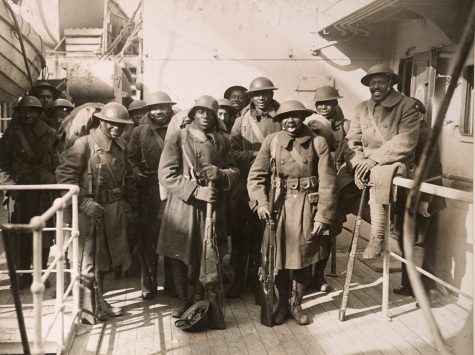
Citation Information:
- Article Title: Harlem Hellfighters
Author: Michael Bay
Website Name: Britannica
URL: https://www.britannica.com/topic/Harlem-Hellfighters
Access Date: 2/7/2023
Publisher: Encyclopedia Britannica, Inc.
Last Updated : Jan 12, 2022
Original Publish Date: Nov 02, 2018
- Article Title:
Author: Sarah Pruitt
Website Name: History.com
URL: https://www.history.com/news/wwi-hero-henry-johnson-finally-receives-medal-of-honor
Access Date: 2/7/2023
Publisher: A&E Television Networks
Last Updated : Aug 31 , 2018
Original Publish Date: Jun 2, 2015
- Article Title: The Harlem Hellfighters: African-American New Yorkers were some of WWI’s most decorated soldiers
Author: Lucie Levine
Website Name: https://www.6sqft.com
Publisher: https://www.6sqft.com
Original Publish Date: Nov. 11, 2020
Images:
File Name of Image: Harlem-Hellfighters-369th-Regiment-Arrives-Home.jpg
Original Source Link: https://www.worldwar1centennial.org/images/News/Armistice_Day_2020_articles/Harlem-Hellfighters-369th-Regiment-Arrives-Home.jpg
Date of Photograph: Feb 10, 1919
File Name of Image: band-members.gif
Original Source Link: https://www.archives.gov/files/education/lessons/369th-infantry/images/band-members.gif
Date of Photograph: Feb 12, 1919
File name: James-Reese-Harlem-Hellfighters-Paris.jpg
Original Source Link: https://imgs.6sqft.com/wp-content/uploads/2019/05/11121453/James-Reese-Harlem-Hellfighters-Paris.jpg
File name: 369 return home boat edit.jpg
Original Source Link: https://www.abmc.gov/sites/default/files/369%20return%20home%20boat%20edit.jpg




